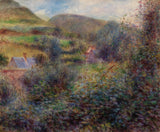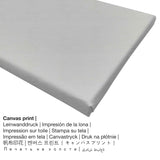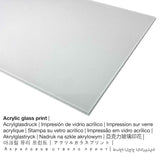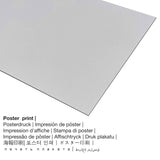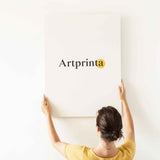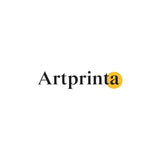Pierre-Auguste Renoir, 1879 - Gburugburu ebe obibi nke Berneval - ọmarịcha nka
Ụtụ gụnyere. Mbupu gbakọrọ na ndenye ọpụpụ.
Ozi mgbakwunye site na webụsaịtị ihe ngosi nka (© Nwebiisinka - Barnes Foundation - Ntọala Barnes)
Although titled Environs of Pourville in the records of the dealer Durand-Ruel as early as 1891, this canvas does not depict the landscape around Pourville, the coastal village to the southwest of Dieppe, where Monet painted in 1882. Rather, it seems to represent the same stretch of coastal landscape that appears in three other paintings of 1879 and 1880, The Mussel Harvest (NGA, Washington DC), View of the Seacoast near Wargemont in Normandy (Metropolitan Museum of Art, NYC), and The Wargemont Road (private collection). An entry in Durand-Ruel's stock book identifies the first of these canvases as a view of Bemeval. All of these canvases, it seems, were painted during the spells that Renoir spent in 1879 and 1880 at the Chateau de Wargemont, the estate of his friend and patron Paul Berard, situated inland from Berneval on the Channel coast to the northeast of Dieppe. Although the date on Environs of Berneval has until recently been read as "78," close examination suggests that it is "79," and thus that the picture dates from Renoir's first recorded stay with Berard. Comparison with the other canvases indicates that in Environs of Berneval the sea is located behind us and to our left, as we look up the narrow valley toward the hills beyond. This picture, and the other landscapes that Renoir executed during his stays with Berard at Wargemont, mark the beginning of his move away from the explicitly contemporary scenarios of the environs of Paris to the seemingly more timeless, unchanging scenes that he favored in his later work.Here, as in many of his landscapes of the 1870s, Renoir chose a very unconventional viewpoint. The viewer is seemingly located deep among the foreground bushes, which frame the right margin but also run across the entire foreground, denying us any clear foothold in the space depicted. Nor is there anything especially picturesque or distinctive about the chosen site; wesee parts of the gables and roofs of a few cottages, framed by two hills in the background. Rather, the primary interest of the picture lies in the complex play of brushmarks and colors, though the highlighted roof to the right of center and the crisper margins of the roofs in this area create an unobtrusive pivot that helps to articulate the composition and enhances the sense of space. The paint handling heightens our sense of immersion in the bushes, since the foliage, running across the entire foreground and up the right side of the canvas, is treated in variegated soft dabs of color—greens, light and dark blues, and a few deep reds—with only a few fine linear strokes that suggest the stems of the bushes; smaller and somewhat crisper strokes describe the trees, cottages, and hillside beyond, but nothing is in sharp focus. John House, Renoir in the Barnes Foundation (New Haven: Yale University Press, 2012), 95.
Nkọwa nke eserese, nke nwere aha "Environs of Berneval"
"Environs of Berneval" was created by Pierre-Auguste Renoir in the year 1879. Nke kariri 140 a na-ese ihe mbụ dị afọ na nha: N'ozuzu: 18 1/8 x 21 7/8 na (46 x 55,5 cm). Mmanụ na kwaaji was used by the European artist as the medium of the work of art. Today, this artwork is part of the art collection of Ntọala Barnes in Philadelphia, Pennsylvania, Njikota Obodo Amerika. We are pleased to state that the work of art, which is part of the ngalaba ọha a na-enye ya site n'ikike nke Site n'ikike nke Barnes Foundation, Merion na Philadelphia, Pennsylvania.Ebe E Si Nweta nke ihe osise:. N'elu nke ahụ, nhazi nke mmepụta dijitalụ na-abanye odida obodo format ma nwee oke onyonyo nke 1.2: 1, nke pụtara na ogologo bụ 20% ogologo karịa obosara. Pierre-Auguste Renoir was a male illustrator, painter, sculptor from France, whose artistic style can primarily be classified as Impressionism. The artist was born in the year 1841 in Limoges, Nouvelle-Aquitaine, France and passed away at the age of 78 N'afọ 1919 na Cagnes-sur-Mer, Provence-Alpes-Cote d'Azur, France.
Ihe ndị ahịa anyị nwere ike isi na ya nweta
Maka mbipụta nka ọ bụla, anyị na-enye ụdị nha & ihe dị iche iche. Anyị na-ahapụ gị ka ịhọrọ nha na akụrụngwa ọkacha mmasị gị n'etiti nhọrọ nhazi ngwaahịa ndị a:
- Mbipụta iko acrylic (nke nwere ezigbo mkpuchi iko): The acrylic glass print, which is often described as a an art print on plexiglass, will turn your chosen original into stunning home decoration. Your own version of the work of art is being manufactured with the help of modern UV direct print machines. This makes rich, stunning print colors.
- Ebipụta akwụkwọ mmado na ihe akwa akwa: A poster print is a UV printed sheet of canvas paper with a fine surface finish. It is designed for placing the art print using a special frame. Please note, that depending on the size of the poster we add a white margin between 2 - 6cm round about the print motif to facilitate the framing with your custom frame.
- Kwaaji: A printed canvas applied on a wood frame. A canvas has the plastic impression of three dimensionality. Your canvas print of your favorite artwork will allow you to transform your very own fine art print into a large size work of art. The advantage of canvas prints is that they are relatively low in weight. That means, it is quite simple to hang the Canvas print without the support of any wall-mounts. Therefore, a canvas print is suited for all types of walls.
- Aluminom dibond (ọkpụkpụ ọla): These are metal prints on aluminium dibond material with an outstanding depth effect. The Aluminium Dibond Print is the best introduction to art reproductions with aluminum. For our Direct Aluminium Dibond print, we print the selected artpiece onto the aluminium surface. The bright & white components of the original artwork shimmer with a silk gloss, however without glow. Colors are bright and luminous, details of the print are clear and crisp, and the print has a a matte appearance you can literally feel.
Ozi omenka
| Aha onye nka: | Pierre-Auguste Renoir |
| A makwaara dịka: | Renoir Auguste, Auguste Renoir, Renoir Pierre Auguste, Renoir August, p.a. renoir, Pierre Auguste Renoir, Renoir Pierre-Auguste, renoir p.a., renoir a., August Renoir, a. renoir, pierre august renoir, Renoir Pierre August, Renoir, Renuar Ogi︠u︡st, Renoar Pjer-Ogist, Pierre-Auguste Renoir, רנואר פייר אוגוסט, רנואר אוגוסט, firmin auguste renoir |
| okike onye nka: | nwoke |
| Obodo onye nka: | French |
| Ọrụ onye na-ese ihe: | onye na-ese ihe, onye na-ese ihe, onye na-ese ihe |
| Mba onye si: | France |
| Nkewa onye nka: | omenkà nke oge a |
| Ụdị nka: | Mmetụta |
| Afọ ọnwụ: | 78 afọ |
| Afọ ọmụmụ: | 1841 |
| Amụrụ na (ebe): | Limoges, Nouvelle-Aquitaine, France |
| Afọ ọnwụ: | 1919 |
| Ebe ọnwụ: | Cagnes-sur-Mer, Provence-Alpes-Cote d'Azur, France |
Nkọwa ahaziri nke ihe nka
| Aha nka: | "Environs of Berneval" |
| Nhazi nka: | sere |
| Okwu nche anwụ: | nkà nke oge a |
| Time: | 19th narị afọ |
| Afọ nka: | 1879 |
| Afọ nka: | ihe karịrị 140 afọ |
| Ihe osise izizi: | mmanụ na kwaaji |
| Akụkụ izizi (ọrụ nka): | N'ozuzu: 18 1/8 x 21 7/8 na (46 x 55,5 cm) |
| Egosiputara na: | Ntọala Barnes |
| Ebe ngosi nka: | Philadelphia, Pennsylvania, Njikota Obodo Amerika |
| Dị n'okpuru: | Ntọala Barnes |
| Licensedị ikike: | ngalaba ọha |
| Site n'aka: | Site n'ikike nke Barnes Foundation, Merion na Philadelphia, Pennsylvania |
Ozi ndabere ngwaahịa
| Nkewa edemede: | ọmarịcha nka |
| Mmeputakwa: | dijitalụ mmeputakwa |
| Produzọ mmepụta: | Mbipụta UV ozugbo (mbipụta dijitalụ) |
| Ihe ngosi: | German mere |
| Stockdị ngwaahịa: | mmepụta ihe na-achọ |
| Ihe eji eme atụmatụ: | ụlọ mmepụta ihe nka, ihe ndozi ụlọ |
| Ndepụta: | nhazi odida obodo |
| Oke akụkụ onyonyo: | 1.2: 1 |
| Mmetụta akụkụ onyonyo: | ogologo bụ 20% ogologo karịa obosara |
| Akụrụngwa dị: | Mpempe akwụkwọ, akwụkwọ mmado (akwụkwọ akpa), mbipụta enyo acrylic (nwere ezigbo mkpuchi iko), mbipụta ọla (aluminium dibbond) |
| Mpempe akwa akwa (akwa akwa na etiti ihe ndọtị) nha: | 60x50cm - 24x20", 120x100cm - 47x39", 180x150cm - 71x59" |
| Mbipụta iko acrylic (nwere ezigbo mkpuchi iko) dị iche iche: | 60x50cm - 24x20", 120x100cm - 47x39", 180x150cm - 71x59" |
| Mpempe akwụkwọ mmado (akwụkwọ kwaaji) nha dị iche iche: | 60x50cm - 24x20", 120x100cm - 47x39" |
| Mbipụta aluminom (ihe alumini debond ihe): | 60x50cm - 24x20", 120x100cm - 47x39" |
| Igwe onyonyo: | na-enweghị etiti |
Nkwupụta iwu: We try our best in order to describe our art products as accurately as possible and to illustrate them visually in our shop. Nonetheless, the colors of the printed materials and the print result may vary somehwat from the image on your device's screen. Depending on your settings of your screen and the quality of the surface, colors may not be printed as exactly as the digital version on this website. Given that the fine art prints are printed and processed manually, there might also be minor discrepancies in the motif's exact position and the size.
© Nchekwa ikike nwebisiinka, www.artprinta.com (Artprinta)

